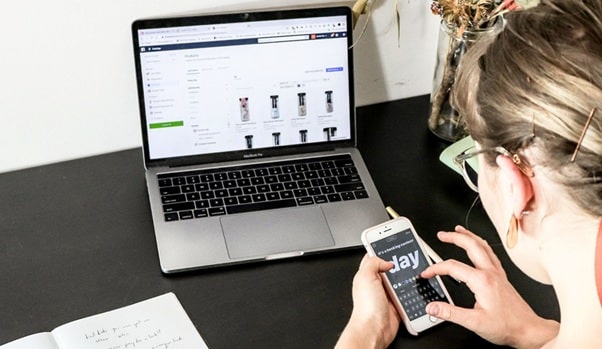Every eCommerce store has two core types of pages: category pages and product pages. Both play a role in ranking and conversions, but few treat them with equal strategic thought. Some pour all their resources into product listings. Others load their categories with keywords and ignore the rest. Both approaches fall short.
Search performance relies on targeting the right intent with the right structure. If you’re serious about generating long-term revenue through organic channels, knowing where to focus matters.

For brands seeking clarity and performance-driven results, tailored eCommerce SEO services can provide the structure and execution needed to make that choice count.
What Are Category Pages?
Category pages group similar products together. In most online stores, they act as middle-layer pages between the homepage and individual product listings. They’re often used for site navigation and are meant to guide users through a logical purchase path.
Examples:
- “Men’s Running Shoes”
- “4K TVs”
- “Vegan Protein Powder”
These pages target broad keywords with high search volume. Users landing on them are likely still comparing options. They want to browse, filter, and narrow down their choices.
Effective category pages act as content hubs. They attract organic traffic, distribute link equity, and help search engines understand site hierarchy.
What Are Product Pages?
Product pages are the final step before purchase. They include specific information about a single item—title, description, price, specs, reviews, and media. Each one targets long-tail keywords, often with a buying intent.
Examples:
- “Nike ZoomX Vaporfly NEXT% 3 – Men’s Black/Volt”
- “Samsung 65-Inch QN90C Neo QLED 4K Smart TV”
- “True Plant Protein – Vanilla 1kg”
These pages answer a single question: “Is this the item I want to buy?” From an SEO angle, they support ranking for product-specific queries. But they also face serious limitations:
- Limited content scope
- Duplicate issues from variants
- Low link authority
- Short lifespan for discontinued items
SEO Value Comparison
| Feature | Category Pages | Product Pages |
| Keyword Potential | High-volume, broad terms | Specific, low-volume |
| Content Flexibility | Rich SEO copy, filters, internal links | Fixed layout, minimal content room |
| Conversion Stage | Middle of funnel | Bottom of funnel |
| Link Equity Distribution | Central hub for internal linking | Often isolated |
| Long-Term Value | Evergreen, scalable | Often short-lived |
| Ranking Difficulty | Higher due to competition | Easier for niche terms |
Each page type supports a different role. One attracts, the other converts. Prioritising depends on your traffic goals, sales funnel, and content resources.
Where Should SEO Focus First?
Most stores benefit from optimising category pages first. They offer the best balance between search volume, content opportunities, and scalability.
Reasons to prioritise:
- Category pages can rank for multiple product types. One well-optimised page may bring in thousands of monthly searches.
- They are easier to maintain. Unlike product listings, they don’t get removed due to stock issues.
- They improve site structure. Strong category pages help distribute link equity and support internal SEO.
Situations where product page SEO matters more:
- Products have high individual search volume (e.g., iPhone 15 Pro Max).
- Niche stores with very few SKUs.
- Seasonal items where timing matters.
Avoid splitting your efforts blindly. Prioritise based on business model, competition, and user intent.
SEO Strategies for Each
Category Pages – High Impact Tactics
- Write 200–300 words of optimised intro content.
- Use subheadings, FAQs, and schema where possible.
- Add filters and links that guide users and bots.
- Target broader commercial keywords.
- Internally link from blog posts and related categories.
Product Pages – Precision Tactics
- Use unique product descriptions.
- Add user-generated content like reviews.
- Implement structured data (e.g., price, availability).
- Optimise product titles and meta descriptions.
- Consolidate thin variants under canonical tags.
Common SEO Mistakes to Avoid
Even with the best intentions, errors in eCommerce SEO can limit organic growth. Here are some recurring issues:
- Over-indexing Low-Value Product Pages
Stores often allow every product variant to be indexed. That floods search engines with near-identical pages, wasting crawl budget and diluting link equity.
- Neglecting Category Content
Too many stores leave category pages blank or thin. Without content, search engines struggle to assess topic relevance. Worse, there’s no opportunity to target broader commercial keywords.
- Cannibalising Keywords
Multiple pages targeting the same search terms leads to confusion for both Google and users. Keyword targeting should be structured: category pages for broad phrases, product pages for long-tail queries.
- Forgetting Internal Links
Internal links signal importance and distribute ranking power. If category pages lack links from blogs or product pages, they become SEO dead-ends.
Which Page Type Deserves More SEO Attention?
Category pages and product pages both matter. But they do different jobs.
Category pages attract broader traffic, support site structure, and scale well across collections. Product pages serve bottom-funnel users but offer limited SEO scope.
For most eCommerce stores, category pages deserve more attention—at least in the early stages of SEO planning. That’s where the compound benefits lie.
Once those are built and performing, product-level optimisation makes more sense. Focus should shift according to what the data shows, not fixed assumptions.
SEO is a long game. Make the foundational choices early, and you’ll earn the results that follow.

